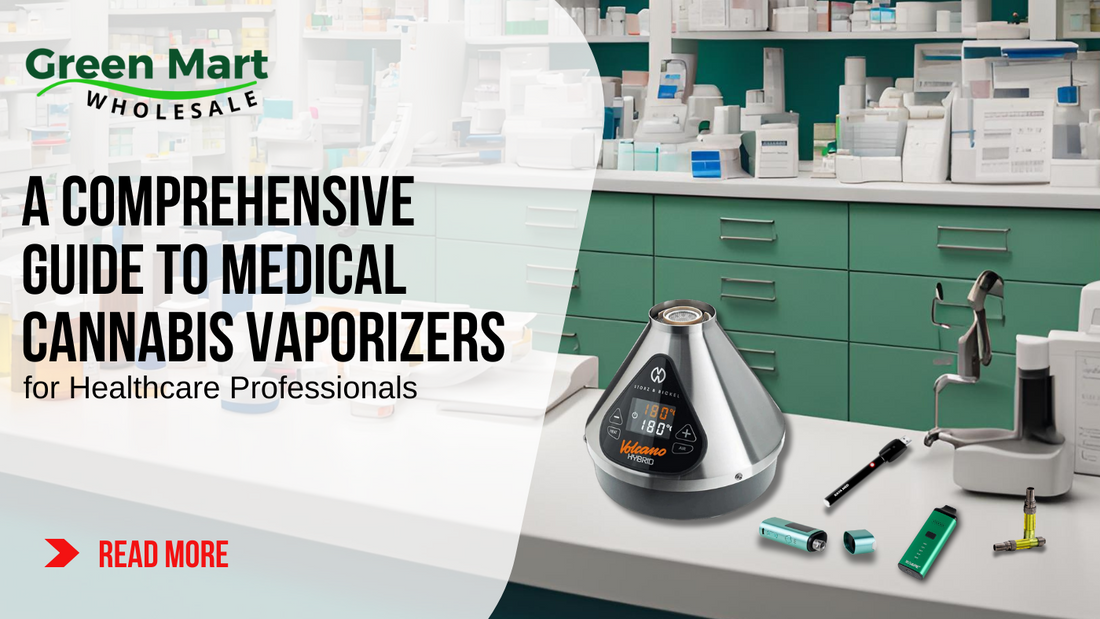
A Comprehensive Guide to Medical Cannabis Vaporizers for Healthcare Professionals
Share
As healthcare professionals in Australia, it's essential to understand the nuances of medical cannabis administration, particularly through vaporization. This method offers patients a rapid onset of effects and a potentially safer alternative to traditional smoking. This guide delves into the critical aspects of medical cannabis vaporizers, tailored specifically for pharmacists and doctors.
Understanding Vaporization in Medical Cannabis
Vaporization involves heating cannabis to a temperature that releases its active compounds without combustion. This process produces inhalable vapor, allowing patients to experience therapeutic benefits while minimizing exposure to harmful by-products associated with smoking.
Regulatory Considerations
In Australia, therapeutic cannabis vaporizers are regulated to ensure compliance with safety standards and the Medical Devices Essential Principles. Unlike nicotine vaporizers, which are publicly listed on the TGA website, authorized cannabis vaporizers are issued an ARTG number but are not included in a public database.
Pharmacists must verify that vaporizers intended for therapeutic cannabis use meet Therapeutic Goods Administration (TGA) approval and have a valid TGA Notification Number. Additionally, pharmacists should stay informed about state-specific dispensing regulations
Types of Medical Cannabis Vaporizers
-
 Portable Vaporizers (available for dry herbs, oils and concentrates):
Portable Vaporizers (available for dry herbs, oils and concentrates):- Description: Compact, battery-operated devices designed for on-the-go use.
- Usage: Patients load finely ground cannabis flower into the chamber, adjust temperature settings, and inhale.
-
Considerations: Ensure the device is compatible with the patients' prescribed treatment (e.g. dried flower, concentrated / extract or cartridge).
-
Desktop Vaporizers:- Description: Stationary devices intended for home or clinical settings, providing robust performance and customizable features.
- Usage: Users connect the vaporizer to a power source, load the cannabis flower, set desired temperatures, and inhale through a delivery system like a balloon or whip.
-
Considerations: Suitable for patients requiring consistent dosing in a more controlled environment.
Intended Use: Matching Vaporizers to Medication
Vaporizers are designed for specific cannabis formulations, ensuring optimal efficacy and safety. Matching the right device to the prescribed medication is crucial.
1. Dry Herb Vaporizers (Cannabis Flower)
- Designed for dried cannabis flower, using convection or conduction heating to release cannabinoids without combustion.
- Features temperature control for customized vaporization.
- Requires grinding before use and regular cleaning for efficiency.
2. Concentrate Vaporizers (Oils, Wax, Rosin, Rash)
- Compatible with high-potency cannabis extracts, delivering rapid onset effects.
- Uses ceramic or quartz heating for clean vapor production.
- Requires precise loading and maintenance to prevent residue buildup.
3. Liquid Vape Cartridge Vaporizers
- Works with pre-filled cannabis oil cartridges, offering consistent dosing and ease of use.
- Available in 510-thread or proprietary pod systems.
- Ensures discreet, portable, and controlled intake for medical patients.
Pharmacist Guidance:
✅ Verify prescribed cannabis format (flower, concentrate, or oil).
✅ Ensure vaporizer compatibility with the medication.
✅ Educate patients on proper use and maintenance.
Optimal Temperature Settings for Vaporizing Cannabis Flower
The ideal vaporization temperature for cannabis flower depends on the desired effects and cannabinoid/terpene activation. Here’s a general guideline:
1. Low Temperature (160–180°C)
✅ Best for: Mild effects, enhanced flavor, and terpene preservation.
✅ Cannabinoids & Terpenes Released:
- THC begins vaporizing at 157°C
- Myrcene (relaxing effects) vaporizes around 167°C
✅ Effects: Light, functional high with minimal sedation.
2. Medium Temperature (180–200°C)
✅ Best for: Balanced effects, good vapor production, and full-spectrum benefits.
✅ Cannabinoids & Terpenes Released:
- CBD activates at 180°C
- Limonene (uplifting effects) vaporizes around 177°C
✅ Effects: Moderate relaxation, pain relief, and uplifting effects.
3. High Temperature (200–220°C)
✅ Best for: Maximum cannabinoid extraction, stronger sedative effects.
✅ Cannabinoids & Terpenes Released:
- CBN (sedating, sleep-inducing) vaporizes at 185–200°C
✅ Effects: Strong body relaxation, deep sedation, and increased intensity.
Clinical Implications
Vaporization offers a rapid onset of therapeutic effects, beneficial for conditions requiring immediate (through 510 vape battery through oil cartridges or concentrates) to slower (dry flower vaporizers) symptom relief. However, counseling patients on proper usage is crucial to prevent potential adverse effects. Educate patients on starting with lower temperatures such as 180°C for less dense puffs up to 220°C for a more potent and quicker cannabinoid release puff) and dosages, gradually adjusting based on therapeutic response and tolerance.
Conclusion
As the landscape of medical cannabis evolves, pharmacists and doctors play a pivotal role in guiding patients toward safe and effective administration methods. Understanding the functionalities and benefits of medical therapeutic vaporizers enables healthcare professionals to provide informed recommendations, ensuring optimal therapeutic outcomes for patients.

